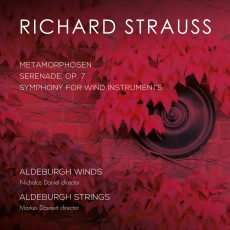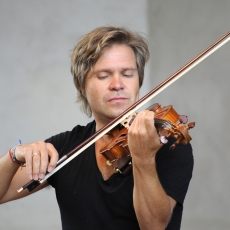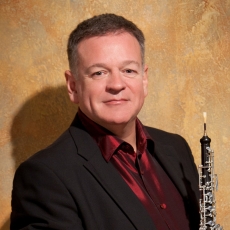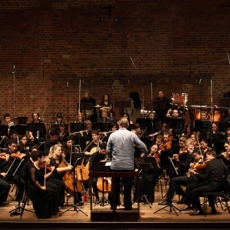Aldeburgh Strings and Winds - R. Strauss: Metamorphosen - Audio Video Club of Atlanta
I’d never been a great fan of Richard Strauss. The testosterone-laden, overly lush orchestrations of his tone poems often seemed to me to conceal a lack of musical substance. But these glorious performances of his sub-symphonic works by the Aldeburgh Winds under Nicholas Daniel and the Aldeburgh Strings under Markus Däunert helped to change my outlook on a composer who turns out to have had a lot to say in music during his very long life (1864–1949).
We begin with Metamorphosen (1945) which was Strauss’ response to the destruction of so much of the Germany that he loved, including the allied bombings that left smoldering ruins of Dresden, Weimar and Munich, completely destroying the Munich National Theatre where Strauss had introduced ten of his operas, and in which his father had played first horn in the orchestra during a fifty year career. Lushly scored for 23 strings, it nonetheless possesses a chamber-music clarity that serves Strauss’ expressions of anguish, sorrow and hopeful resolve very well. After sombre opening chords, the theme is introduced by the dark voices of the violas. In ominous counterpoint to it is none other than the Funeral march from Beethoven’s Eroica, disguised so well that we get only glimpses of it until it is finally stated unequivocally ten measures from the end.
Deep lyricism, arising from despair, pervades this work, contending with the cautiously hopeful note that Strauss expressed in his diary upon the fall of the Third Reich: “At last the most terrible period of human history is at an end, the twelve-year reign of bestiality, ignorance, and anti-culture under the greatest criminals, during which Germany’s 2,000 years of cultural evolution met its doom.” Perhaps that idea of cultural evolution is behind Strauss’ curious choice of the title Metamorphosen, as so much of its music seems to “morph” out of previous expressions of the main theme. The current performance emphasizes the rich and seamless quality of Strauss’ writing, in which a surprisingly tight construction underlies its long, free-flowing lines.
Also on the program are Serenade in E-flat major (1881), a neat little 10-minute work by the teen-aged Strauss that shows us that, even so early, he had absorbed virtually all there was to know about the expressive beauty of instruments. The Symphony for Winds, in four movements (1944–1945) carried Strauss’ dedication “To the Spirit of the Divine Mozart.” Totally belying the trying times through which he was living, he modelled it after Mozart’s grand Serenade for 13 Winds, K361, adding a third clarinet, basset horn and bass clarinet to the scoring. The middle movements, an Andantino and a Minuet, are particularly charming, leaving us totally unprepared for the darkly tragic note at the very opening of the finale, marked Einleitung (beginning).
Produced and recorded at The Maltings, Snape, Suffolk by Philip Hobbs, with post-production by Julia Thomas, the superior sound of these recordings enhances our pleasure in hearing the performances.



